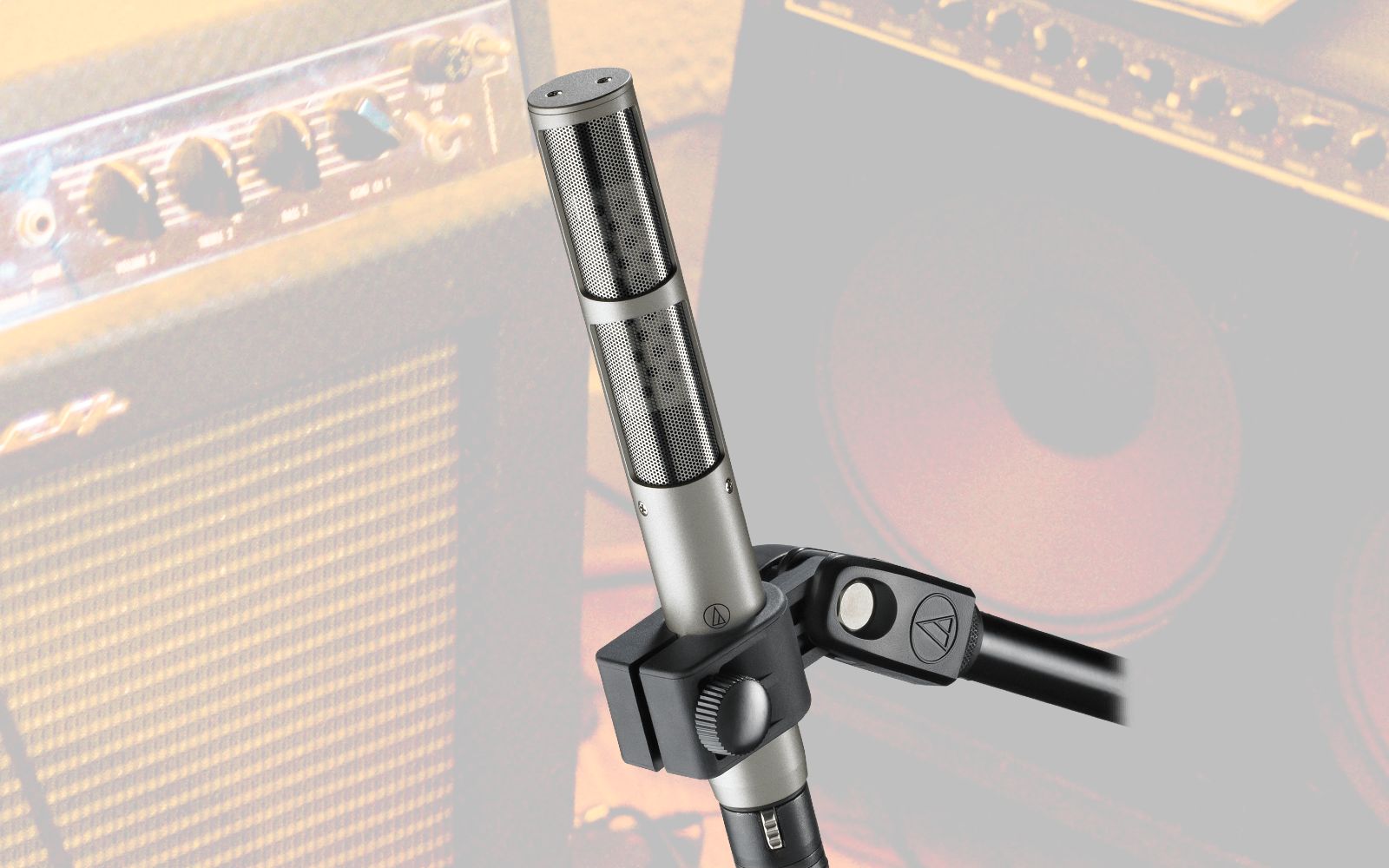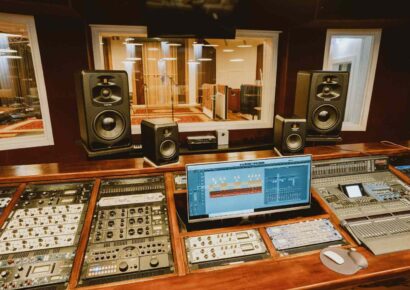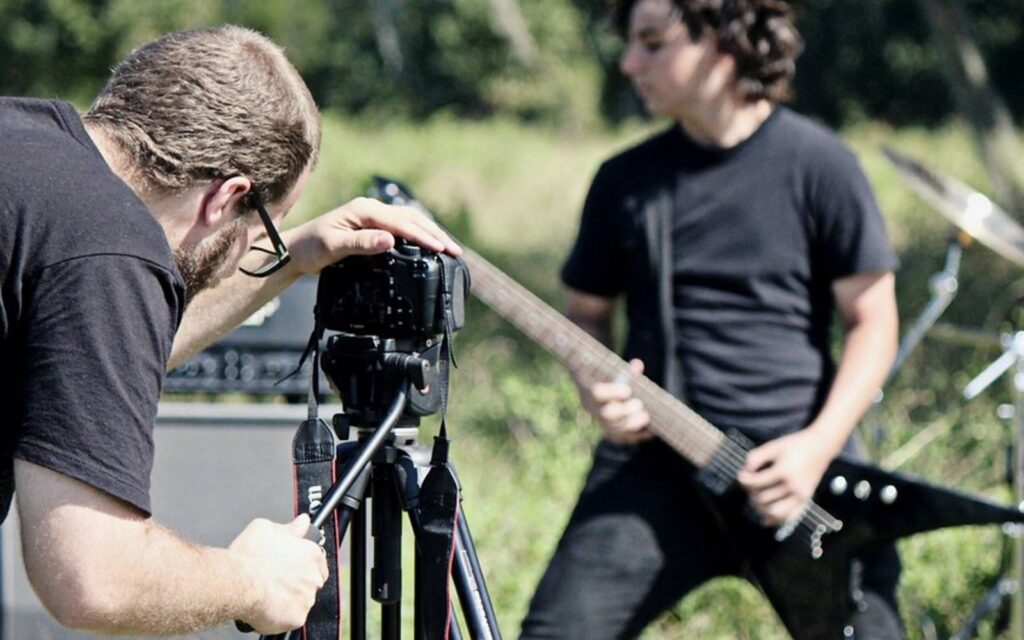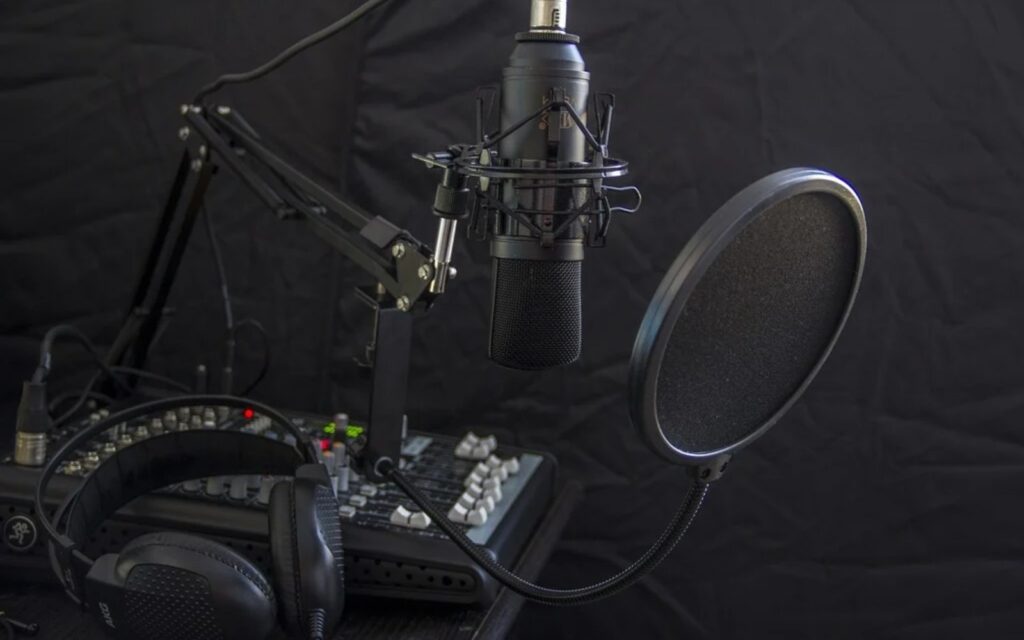Recording guitars can be as simple or as complicated as you want it to be, the beauty of it being that many rooms will yield a great and entirely usable guitar tone, regardless of acoustics and soundproofing.
Volume permitting, a mic placed on the speaker cone of a cabinet will generally sound the same regardless of your environment. Ambient and room mics however, are a whole other story, obviously being more susceptible to acoustic environments. Recording a guitar cabinet with a single microphone can lead to reasonably good results quite quickly; and there’s a handful of generally accepted dynamic and ribbon options that serve as a great option for the frequencies (and SPL!) that guitar cabinets are pushing out. A good middle ground is something like the Audio-Technica AT4081, an active ribbon microphone that captures all the warmth and heft of a ribbon, while preserving some high end and treble clarity that is often lost on other ribbon microphones.
Single miking techniques
To start, we’ll explore two techniques to capture a guitar cab with a single mic. A good rule of thumb when starting out is to have one mic serve as your main sound, while any additional mics can serve to support that main mic. For in your face tones, it’s a good idea to mic up a single speaker, regardless of how many speakers the cabinet has, usually two or four.
Read all the latest features, lists and columns here.
The middle of the speaker, the dust cap, will yield the brightest and most aggressive results with EQ erring on the brighter (sometimes harsher) side. The body of the speaker cone adds, as expected, more body and low end, so you can start by placing your mic between on the edge of the dust cap where it meets the speaker cone for the best of both worlds.
AT4081 Phantom-powered Bidirectional Ribbon Microphone
The AT4081 itself is an active ribbon, so it’s more prepared to take the high SPL that guitar cabinets pump out. Its frequency response extends from 30Hz all the way up to 18kHz, and the figure of eight polar pattern has it focused on the guitar cabinet while capturing a little of the ambient air and space around it for a natural sounding tone. Shifting the mic closer to the dust cap brings out some of the life that the AT4081 offers in the high mids, while shifting it more towards the speaker’s body offer a darker and moodier low mid bump.

Another single-mic technique is to position a microphone a few feet away, equal distance from all speakers on your cabinet, and capture the entire amp as it roars into the room. This might yield a bigger sound, but the proximity of the guitars as you listen will be set back in the mix, the fraction of a second it takes for the signal to hit the mic from further back being audible. The AT4081 again, is a great option for this kind of recording as it has a wide frequency response, as well as the figure of eight pattern picking up some additional room ambience. This offers a much more natural and balanced sound than a mic right up on the speaker!
Multi-miking
Having discussed single miking techniques, let’s explore the world of multi-miking. Continuing with our example of an Audio-Technica AT4081 right up on the edge of our speaker’s dust cap, something like a condenser microphone can be a great option for additional clarity or additional ambience; depending where you put it!
Audio-Technica AT4040 condenser
If your single, main mic is lacking bottom end heft, maybe an additional mic on the speaker cone’s body can be used to blend back in some low end. As this isn’t your main sound, it doesn’t need to sound full and refined, instead it serves to fill any gaps in the sound of the main mic. An Audio-Technica AT4040 condenser can be a great option, its focused frequency response helping to add low end definition to guitars without adding too much mud. You can really push the AT4040 to the edge of the speaker, capturing almost inaudibly dark tones, as the clarity and definition is already captured by the main mic, in our case the Audio-Technica AT4081.
For some really bonkers low end, trying miking up the back of a cabinet, and while this works best for open-backed speaker cabs, there’s no harm in experimenting with whatever you’ve got! The low end build of the cabinet itself can harness some really great, tight and defined punch and ‘womp’, great for metal, hardcore and hard rock guitars. This technique particularly is a great one to capture, and only automate in and out of the mix when that extra weight is needed.
Having used the AT4081 as our main mic for most of these scenarios, let’s switch it up: ribbon mics can be a great way to capture big, blooming room sound, especially of a loud guitar cab. Their darker response (the AT4081 beginning to roll off around 15kHz) prevents it from getting too noisy and distracting, but the subtle colour of the mic allows it to capture the energy of the room. A condenser on the speaker itself can yield very in-your-face results, and the full-frequencied sound allows you to capture everything and EQ later if you choose!
Multiple mics on a speaker might produce some phasey results, and this is a whole other conversation, but phase can be used to your advantage as well, allowing you to shape and refine the EQ response of the sound to control low end or exacerbate it. As makers of noise, you’ll find yourself miking up more speaker cabinets than you know what to do with—so get good at it!
Miking a guitar cabinet can be a lot of fun, and you’ll be surprised how vastly a sound can change as you move the mic from dust cap to speaker body and vice versa. Mastering recording with a single mic can open up a world of options with multi mics, either to blend in tandem with your main sound, to augment, or to offer some natural room sound in addition to it.
Keep reading about Audio-Technica and the AT4081 here.







